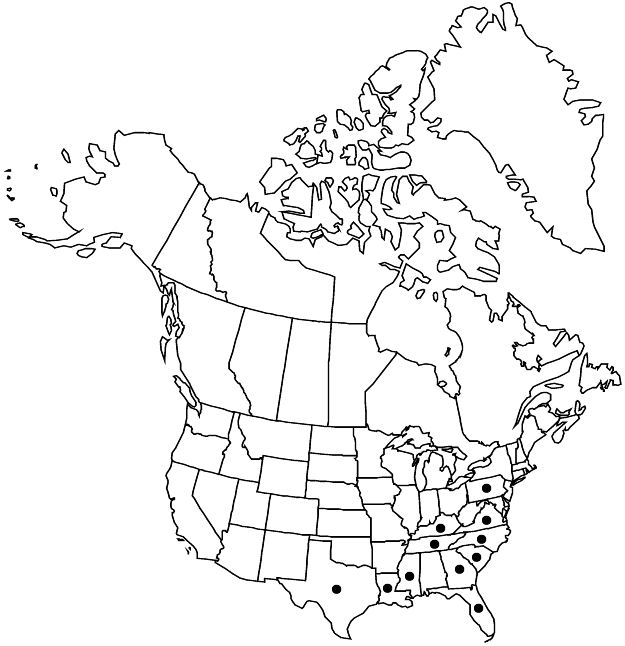Cucurbita moschata
Essai Hist. Nat. Courges, 7, 15. 1786.
Plants annual; roots taproots or fibrous. Stems creeping or climbing, rooting adventitiously at nodes, to 10+ m, villous-hirsute with mixture of longer, thick, vitreous hairs with conspicuous cross-walls and puberulent understory of much shorter hairs, without pustulate-based hairs; tendrils 3–5-branched 1.5–8 cm above base, glabrous, eglandular. Leaves: petiole 4–25(–40) cm, villous-hirsute with mixture of longer, thick, vitreous hairs with conspicuous cross-walls and puberulent understory of much shorter hairs, without pustulate-based hairs; blade sometimes white-mottled abaxially, suborbiculate to broadly ovate, depressed-ovate, or reniform, shallowly 3–5(–7)-lobed, 5–25 × (8–)10–25(–30) cm, broader than long, base cordate, lobes ovate to broadly triangular or broadly obovate, midveins of leaf lobes not distinctly elongate-whitened, margins closely serrate-denticulate or serrulate-apiculate to denticulate or mucronulate, surfaces densely hirsute to hirsutulous abaxially, less densely hairy adaxially, eglandular. Peduncles in fruit 5-ribbed, abruptly expanded at point of fruit attachment, hardened, woody. Flowers: hypanthium cupulate, 5–8 mm; sepals narrowly lanceolate, distally foliaceous, 15–25 mm; corolla yellow, tubular-campanulate, 5–7 cm; anther filaments glabrous or sparsely puberulent at base; ovary pubescent. Pepos evenly light or dark green or cream-speckled to evenly light or dark brown, speckled or not, or wholly white, globose or depressed-globose to ovoid, conic, cylindric, pyriform, or lageniform, 10–40(–120) cm, usually smooth or with rounded ribs, rarely with small, raised, wartlike spots, flesh yellow to light or bright orange to greenish, lightly to very sweet. Seeds whitish to cream or light brown with golden-yellow to silvery margins, ovate-elliptic to elliptic or obovate, 8–21 mm, margins raised-thickened, ± undulate, surface ± punctate-sculptured. 2n = 40.
Phenology: Flowering May–Oct.
Habitat: Oak-pine woods, abandoned agricultural fields, roadsides, disturbed sites
Elevation: 0–100 m
Distribution

Introduced; Fla., Ga., Ky., La., Miss., N.C., Pa., S.C., Tenn., Tex., Va., w South America, introduced also in Mexico, West Indies, Central America, elsewhere in South America (French Guiana, Guyana, Surinam), Pacific Islands (Galapagos Islands).
Discussion
Cucurbita moschata is the primary squash of lowland, humid, tropical and subtropical areas throughout the world. It seems likely that it occurs at least as a waif in more areas than indicated in currently available databases of invasive species.
Fruits of Cucurbita moschata, especially the cheese pumpkins, are favorites for making pumpkin pie. Compared to a Halloween “jack-o-lantern” (a “pepo” pumpkin), flesh of a Moschata pumpkin is more richly colored, higher in nutrients and sugars, and has a denser, smoother-grained flesh. The “cheese” name alludes to the pumpkin’s resemblance to a wheel of cheddar.
Cucurbita moschata has sometimes been cited as C. moschata (Duchesne ex Lamarck) Duchesne ex Poiret, based on C. pepo var. moschata Duchesne ex Lamarck, but the epithet appeared first at specific rank, slightly earlier than in the work by Lamarck.
The wild ancestor of Cucurbita moschata is unknown but mitochondrial DNA data combined with other information suggest that it will be found in lowland northern South America (O. I. Sanjur et al. 2002).
Selected References
None.